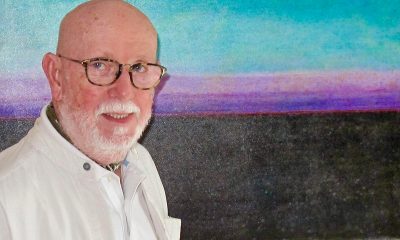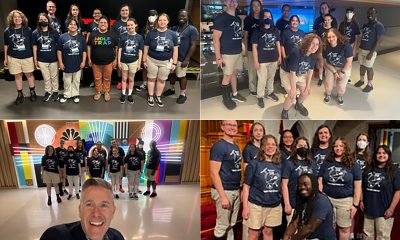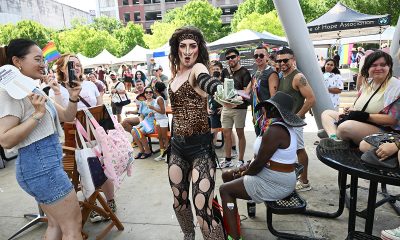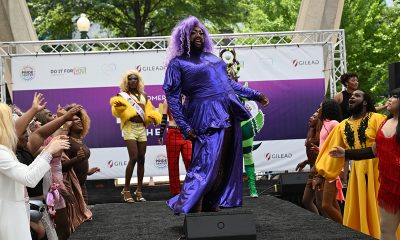Arts & Entertainment
John Waters is bringing back the drive-in — with masks — at Md. Film Festival
Will cicadas spoil the show or add to the fun?
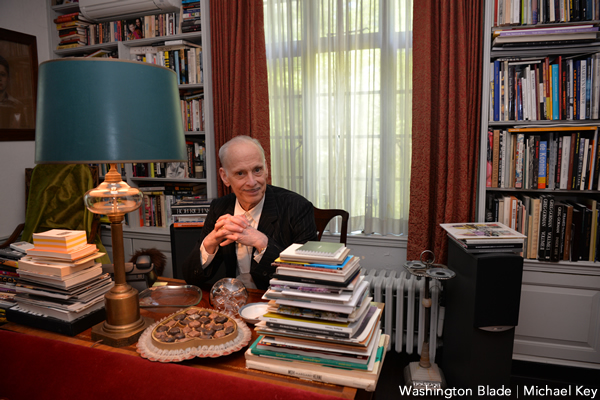
Writer and filmmaker John Waters says he grew up going to drive-in movies.
“We went every single night. With the same movie playing.“
He had a certain routine.
“I used to…drive in alone with two cases of beer covered in a blanket and with four people in the trunk.”
Now Waters is working to introduce a new generation to drive-in movie theaters, which are making a comeback because of the COVID-19 pandemic.
“When the pandemic happened, it did bring drive-ins back,” he said in a recent interview. “Most young people have never been to a drive-in. I think it’s a good answer [to the pandemic], and it’s a good atmosphere for certain types of movies.”
Waters is getting ready to host a double feature drive-in movie night on May 21, as part of the Maryland Film Festival that runs from May 19 to May 27. The theme is “Russian Shock Night at the Drive-In,” because he selected two Russian films to present: Why Don’t You Just Die! and The Road Movie.
This will be the third time during the pandemic that Waters has hosted a drive-in night for a film festival, after double features last year for the Provincetown International Film Festival, at the Wellfleet Drive-In Theatre on Cape Cod, and the New York Film Festival, at The Bronx Zoo.
This time the venue is Druid Hill Park, home of the Maryland Zoo in Baltimore. The film festival is creating a pop-up drive-in theater on the sloping lawn of the Mansion House, the zoo’s headquarters, in conjunction with Baltimore’s Department of Recreation and Parks. It will have a 52-foot-wide inflatable screen and space for 93 vehicles. The price of admission is $25 per car, and tickets sold out in a day.
The film festival is the first organization to get a permit for an in-person outdoor gathering on public property in more than a year from the city of Baltimore, where Mayor Brandon Scott has been cautious about allowing public events. The mayor wouldn’t allow the annual July 4th fireworks show at the city’s Inner Harbor or the annual Artscape festival in July.
“I’m proud to the first one,” said Waters, who came up with the idea for a drive-in during the festival. “I’m thankful that they’re letting us do it.”
Based on his experience at the other festivals, Waters said, he’s confident it will be successful. “I love the idea of the drive-in. I think it will be good, and it is safe. Everybody’s in their car. Even if you haven’t been vaccinated. Well, I hope you don’t come if you haven’t been vaccinated. But still, everybody’s in their car. It’s at a social distance.”
Waters, who lives in Baltimore, traditionally introduces a movie of his choice on Friday night of the annual film festival, and it’s a highlight of the event. Last year it didn’t happen because the festival was cancelled due to the pandemic.
This year the festival is back as mostly a virtual event, because the theater where it’s held is still subject to COVID-related seating restrictions. Organizers asked Waters to bring back his signature movie night. He didn’t want it to be online.
“I said, I hate virtual. I’m so sick of virtual,” he recalled. “They knew I had done a drive-in at the New York Film Festival, where we showed Salo and the Gasper Noe movie, Climax…It works well in the drive In.”
Film festival organizers, led by executive director Sandra Gibson, collaborated with city officials to identify the site and figure out the details. “You don’t have to be vaccinated, but you will have to wear masks…if you’re outside your car,” Gibson said.
The parks department didn’t place a limit on the size of vehicles or the number of people in a vehicle, although larger ones will be located towards the back of the lot, she said.
“If you have a hatchback, we’ll let you open your hatchback and sit in the hatchback,” she said. “We’ll let you sit in the back of a flatbed truck as long as you have a mask on. If you have an SUV that holds eight people, we’re fine with that as long as everybody can see. But they have said you have to stay in your car.”
Waters describes Why Don’t You Just Die! as “a grindhouse, seat-ripping blood-drenched family revenge comedy that begs to be seen in a drive-in with a crazy audience cheering from their cars,” and The Road Movie as “a dash cam documentary from hell that puts you live in the car accidents and near misses all for your rage viewing pleasure.”
He said the two movies are in line with the ones he usually picks for screenings in the film festival’s Parkway Theatre, “but these two I think are even better for a drive-in setting.”
The Road Movie, featuring footage compiled from Russian dashboard cameras, has a car-oriented theme that fits with the drive-in set-up and will be the second film of the night. “You’ll drive home safely after this one, I guarantee you,” Waters said.
He chose a Russian theme, he said, “just because I loved these movies and I knew that Russia was especially kind of unmentionable these days. I’m not a fan of Russia either, but maybe everybody could come dressed as Nikita Khrushchev and his wife, or Putin.”
Given the climate in Russia, “it’s just kind of amazing that these two movies ever got made there,” he said. “They’re pretty radical movies. Especially Why Don’t You Just Die!”
Waters said the location brings back fond memories, in part because the zoo is there and he lived nearby: “I’ve always liked Druid Hill…I used to live across the street at Temple Gardens Apartments for many years.”
He jokes that he’s a little suspicious that the city permitted his event but not the Fourth of July fireworks, citing COVID-19 as the reason.
“Maybe they hope we all get it,” he said. “That’s a new one. We had the censor board. Maybe this is a different way to censor.”
He said he hopes the 17-year cicadas, insects that are just coming out of the ground in Maryland after a 17-year hiatus, make an appearance when his movies are showing.
“I wouldn’t even be mad,” he said, if they “were smashing into the windshields while we were watching. But then we should have shown The Swarm.”
Given the park setting, “you can bet there might be some,” he went on, imagining the possibilities of an insect invasion on his movie night. “It would only add to the disaster theme and the insaneness of the event, to be attacked by nature at Druid Hill Park and watching crazy Russian movies.”
According to the website DriveInMovie.com, there are about 325 drive-in movie theaters currently operating around the United States, down from a peak of more than 4,000 in the 1950s.
Besides the ones in operation, “there are many more that are permanently closed but still remain standing and could potentially be reopened at some point in the future,” says the website, which lists the drive-ins in every state and those that have closed in the past 20 years. “In fact, there have been several drive-in theaters that have been reopened the past couple of years after sitting dark for 20 or even 30 years.”
The first “true” drive-in, the website states, was the “Automobile Movie Theatre” in Camden, New Jersey. It was opened on June 6, 1933 by Richard Hollingshead, a movie buff who initially experimented with showing movies in the driveway of his home.
Hollingshead got a U. S. patent for his drive-in, which the drive-in website describes as essentially a movie screen tied to some trees, a radio placed behind the screen for sound, a film projector on the hood of a car, and a strategy for spacing out cars. His slogan was “The whole family is welcome, regardless of how noisy the children are.”
But Hollingshead’s patent was later declared invalid, and that allowed others to follow his formula without paying him royalties. “Maybe one of the reasons Drive-In Movies are so much more popular in the United States than in other countries is because the drive-in movie is truly an American invention,” the website states.
Today, both vintage drive-ins and pop-up drive-ins are being put to a variety of uses, from sites for fundraisers to filming locations to settings for socially-distanced music performances. When traditional movie theaters were shuttered because of the pandemic, drive-ins became an alternative because the audience remains outdoors.
In some cases, the land is used for swap meets and flea markets when movies aren’t being shown. Joe Biden held drive-in rallies when he was running for President, and voters applauded by honking horns and flashing headlights.
Waters, who just turned 75 and has filmed all of his movies in and around Baltimore, is a drive-in aficionado.
“I’ve spent my whole life in the drive-in,” he said. “I’ve written about them. I grew up in the Timonium Drive-In…The Bengies Drive-In, we filmed Cecil B. Demented in for a week. I spent a week on the roof of that concessions stand.”
In Polyester, “I had an art drive-in,” he said. “The joke was that they showed art movies, and in the concessions stand they had caviar and champagne. That was filmed at the Edmondson Drive-in” in Baltimore.
For him and others in his generation Waters said, the drive-in was “the first apartment’ where “kids could actually get away from their parents.”
It also taught him about saving money by sneaking people in — something he doesn’t want to see on his night.
“I’ll be catching you if you try to sneak in in the trunk, let me warn you,” he said. “I know all the tricks sneaking in the drive-in.”
For this week’s event, the plan is that Waters will be there and will be visible on screen, introducing the movies. Though he’s been vaccinated, there won’t be a Meet-and-Greet session with fans, for safety reasons. “He knows that we’ve got restrictions and he may have his own,” Gibson said. “He’s really conscious that it’s still a pandemic.”
The city has come up with a list of rules and regulations for those with tickets. Besides the requirement that people wear masks when outside the vehicle, no food or drink may be consumed outside of vehicles. Car windows must be up when eating. Tailgating isn’t allowed. Everyone must pre-register and sign a parks department waiver before arriving.
Waters said he read all the rules and couldn’t find any restrictions against having sex in a vehicle during a movie.
“I guess that means you can have sex,” he said. “When I was young, that’s what everybody did.”
The same goes for drinking in a vehicle, he said. “That’s something you always did at the drive-in too.”
The list of rules and regulations is part of the traditional drive-in experience, because every drive-in has rules. In a way, Waters said, it also goes along with the theme for the night:
“It will feel like the Russian government is watching.”
Although the drive-in night is sold out, other tickets are still available to the Maryland Film Festival, including Pride Night and eight LGBTQ-oriented films viewable online. Information about the lineup is at mdfilmfest.com.
Sports
Trans cyclist’s victory sparks outrage in conservative media
Katheryn Phillips is originally from DC

On the heels of UPenn erasing the record of the first openly transgender NCAA Division I All-American swimmer and the U.S. Supreme Court’s decision to tackle bans on trans student-athletes, right wing media is now all hot and bothered about the latest trans woman who won a cycling championship — even though she competed according to the rules.
On Tuesday, 58-year-old Katheryn Phillips finished first in USA Cycling’s Lyons Masters National Championship race for women aged 55-59, with a time of 1:42:10, according to the official results posted by the organization. The record shows her gender as “F” for female.
One second behind Phillips was Julie Peterson, with a time of 1:42:11 — as were three other cyclists: Mary Beth Grier, Andrea Cherniak-Tyson, and Carolyn Maddox.
Peterson, 57, was so outraged, she told Fox News she refused to stand on the podium in second place next to Phillips. Her story was swiftly shared by the New York Post (also owned by Fox’s parent company News Corp.), the Daily Mail, Breitbart, and other conservative media.
Both Peterson and another competitor are accusing USA Cycling of “hiding” that a transgender woman had registered to race.
“It was hidden from us. Katheryn Phillips, KJ’s name, was not on that list. And I checked it up all the way to the point of closure when we couldn’t register online anymore,” Debbie Milne told Fox.
“If I had known, I wouldn’t have spent thousands of dollars in travel and time off work to come and do a race,” Peterson said. Fox welcomed Milne, 56, who finished seventh on Tuesday, to Fox & Friends Thursday morning.
(Video courtesy of Fox News)
Peterson told Fox she did complain to USA Cycling officials prior to the race. Both Milne and Peterson referred to Phillips as a male, and with “he/him” pronouns.
“To be fair to all humans, if we want to say ‘him’ or ‘her,’ he was born a biological male, that is a fact,” Milne said. “And that is the thing that makes it an unfair advantage. Whatever has happened after that is a whole different topic.”
“I said, ‘I don’t want to race against a man,’ and they quickly scolded me and said ‘Oh, you can’t call him a man,’ and I’m like ‘Well, he is a man,’ so I was quickly scolded and corrected that it is a woman and I don’t even know what to say.”
USA Cycling did not respond to the Washington Blade’s emails requesting comment.
Phillips, who goes by Kate and by “KJ,” is a former rugby player with the D.C. Furries, who stated in the comments of a 2024 article published by Zwift Insider that she was the first out trans athlete in the U.S. to compete under the 2004 International Olympic Committee’s guidelines on trans participation.
“When USA Rugby told me about the IOC decision in 2004, I raised my hand to be included. I experience nothing but joy when I play, ride, and race,” Phillips said.
As the Blade has reported, the International Olympic Committee drastically revised those rules in 2021, and in March, Republican lawmakers in D.C. demanded the IOC ban trans female athletes from women’s sporting events altogether.
The Blade also reached out to Phillips for comment but as of press time we have not received a response. She told Zwift Insider in March 2024 she does not let those who disapprove or spread hate impact her performance or her attitude.
“I am unaffected by dissent. I love, I share joy, I am me, and I have been my authentic self for decades,” she said. It’s been reported Phillips came out in 1999, and told Zwift Insider she considers herself a lifelong cyclist.
“I’ve been on a bike for as long as I can remember,” said Phillips. “As kids, my friends and I rode all over town, we were feral kids; no cell phones, no trackers … we just roamed, and nobody got in trouble or hurt bad enough not to ride home … Scrapes/bruises/cuts were not an issue for us. In my teens, I worked for myself as a court/legal messenger, doing all of the work via my bike until I got a car. Raced BMX as a kiddo (when I mowed lawns to cover the race entry fees), I did MTB stuff (non-racing) and Sprint/Olympic Triathlons in my 30’s, and now I’m racing on Zwift, Road/Gravel, and CX in my 50s.”
In the comments section, Phillips made clear she’s not competing to win.
“I don’t do sports for victory, I do it because like many other women, I am an athlete to my core,” she said. “Unlike some, I am not there to WIN, I am there to do my best with the competitors and teammates I have around me trying to do the same…we are in it for the experience. I rejoice in their wins, and a lot of joy is reflected back to me when I have a good day.”
Celebrity News
Nina West’s ‘Sugar in the Tank’ tour comes to Rehoboth Beach
Drag Race’ contestant will be at Clear Space Theater Company on July 6
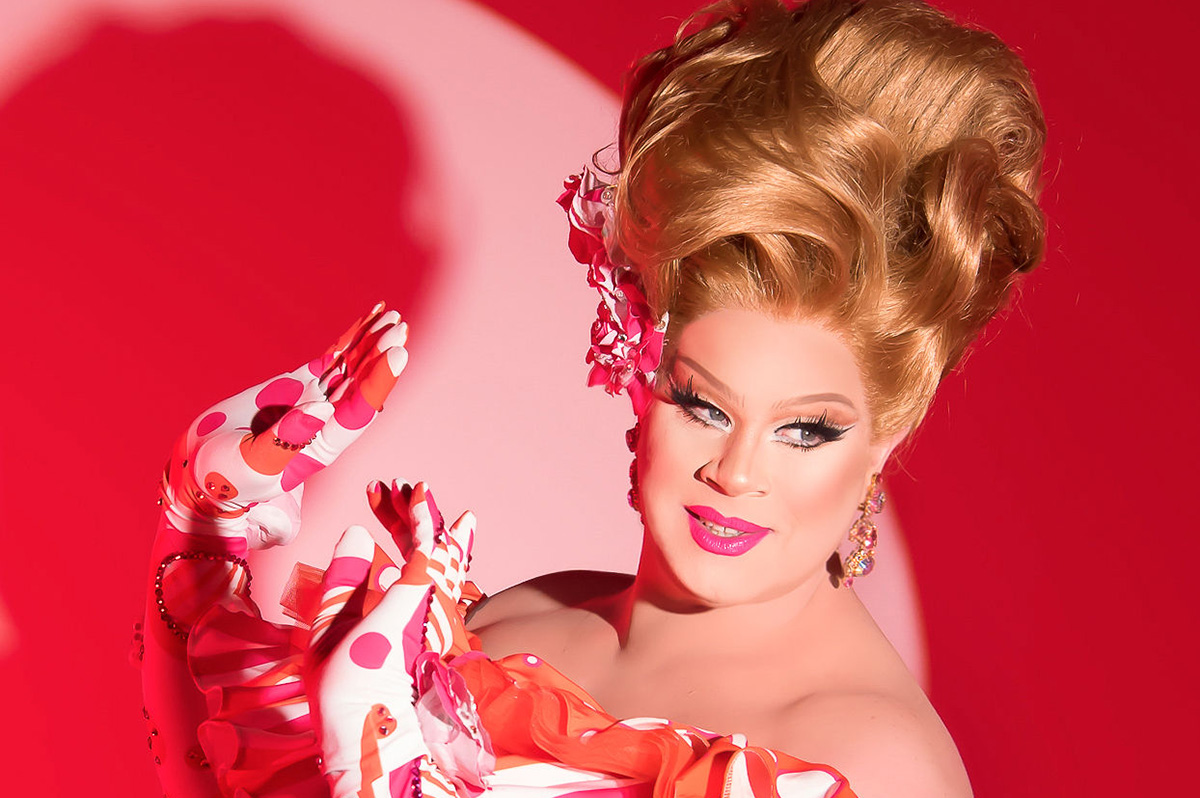
Nina West, a drag queen known for competing on “RuPaul’s Drag Race,” is currently on her ‘Sugar in the Tank’ tour around U.S. cities.
With previous shows in Key West, Fla., New York, and hometown of Columbus, Ohio, the tour is staying put in Provincetown, Mass., from late July to early September. It will make a stop at Clear Space Theater Company in Rehoboth Beach, Del., as part of a summer cabaret series on July 6.
Andrew Levitt has been performing as Nina West for 25 years, who got her rise from starring in “Drag Race” Season 11, where she placed sixth and won Miss Congeniality, a title awarded to the contestant who is regarded as the kindest and most helpful one of that season.
West has toured “Hairspray” on Broadway as Edna Turnblad, starred in a couple of feature films and published a children’s book titled ‘The You Kind of Kind.’
Levitt said he wrote this show in response to attacks from the government towards the LGBTQ community.
“‘Sugar in the Tank’ is a big old gay fabulous summer musical,” Levitt told the Washington Blade. “The show is a response to the darkness that I think has fallen over a lot of people in the country and it’s hopefully trying to bring a little bit of light and a little bit of joy.”
“Sugar in the Tank” is a Southern euphemism for gay, often holding a negative connotation. Levitt said he wanted to “reclaim and embrace” queerness in times when some people want to take that away.
Levitt said he knew he would be traveling to predominantly queer destinations like Key West and Provincetown for these shows and that was always at the forefront of his mind when writing “Sugar in the Tank.”
This will be Levitt’s first time in Rehoboth Beach. Clear Space Theater is considered Delaware’s second-largest professional non-profit theater and the state’s most prolific producer of professional theater. The space seats just 170 patrons and Levitt said he loves the intimacy of a small venue and that it’s his favorite way to do a show.
“Stages like this size are the perfect size for me because it allows for me to really showcase my talents,” Levitt said.
Levitt founded the Nina West Foundation in 2015 to uplift and sustain the central Ohio LGBTQ community, which has raised more than $3 million for various organizations. He said he makes activism part of the entertainment in his career.
“That’s the nuance of what drag is. We can be ridiculous for fun and we can be serious but it’s all wrapped up into one thing,” Levitt said. “I think that can be the power of it.”
Levitt said West is so much more confident now than when he first started performing as her. He didn’t know where his voice belonged in the community in the past, but because of those who came before him in this art form, he has learned to harness the power of the stage and the power of the wig to be able to tell stories.
“I really love my community. I love queer people. I love who we are and what we represent,” Levitt said. “Knowing our history and knowing that we’ve been through a lot, I’m really thrilled that as a queen, I can use my voice and my platform to help try to better our community, not try to speak for everyone but try to lend voice to people who desperately need it.”
Levitt’s advice to young queer artists is to not give up on yourself, surround yourself with supportive people and allow yourself the opportunity and space to fail, to ask questions, and to not give up.
“Our young people have got to be told they matter,” Levitt said. “Oftentimes, people are told that they don’t matter, that their voice doesn’t matter, that they cannot make a difference and I want to remind every single person who’s doing this that they do matter, they can make a difference, their voice is intrinsic to who we are as a community.”
If Sugar in the Tank was a drink, it would be a Bahama Mama or Sex on the Beach, said Levitt, because they are delicious, juicy, and sugary, just like the show.
“I just want everyone to know that they should come to ‘Sugar in the Tank’ and experience a show that’s built on joy and levity and silliness and fun and come have some fun with me and show me the fabulous love of Rehoboth Beach,” Levitt said. “I can’t wait.”
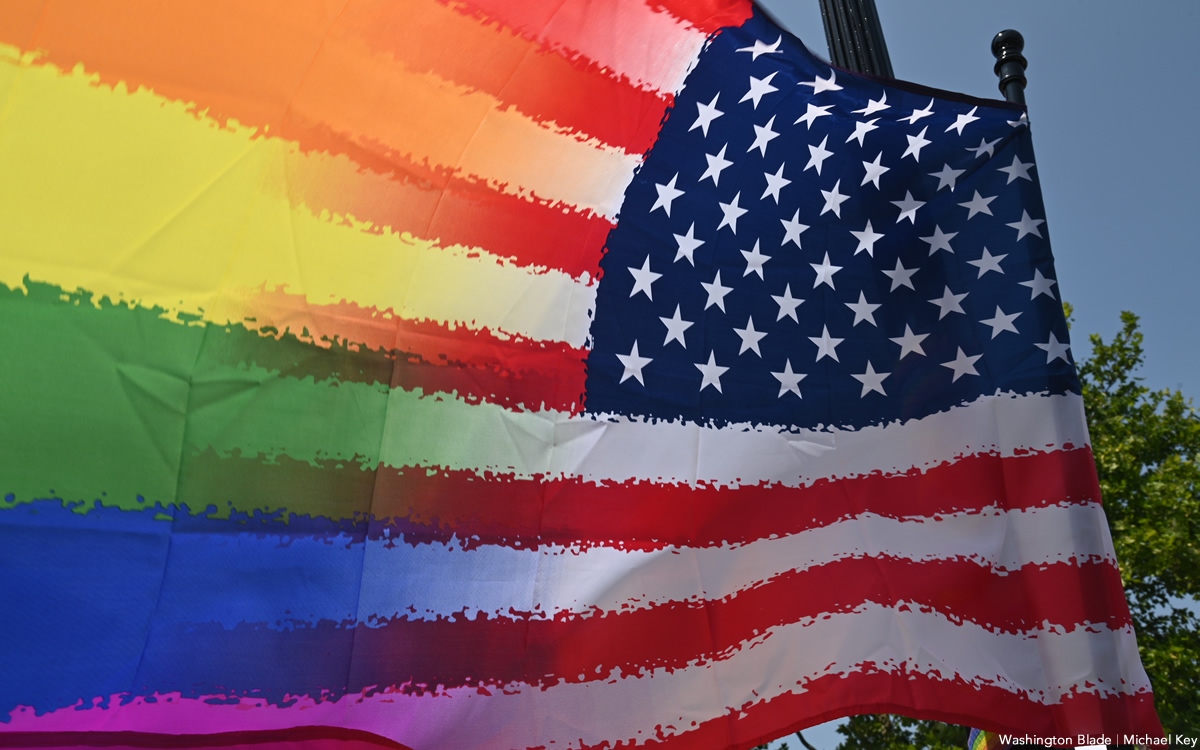
The Rainbow History Project will host “Pickets, Protests and Parade Exhibit Tour” at 7 p.m. at Freedom Plaza. This event honors the courage, resilience and resistance of D.C.’s gay community. For more details, visit Eventbrite.
Go Gay DC will host “LGBTQ Community Social” at 7 p.m. at Hyatt Centric Arlington (1325 Wilson Blvd.). This fun event is ideal for meeting new people and community building. Attendance is free and more details are available on Eventbrite.
Xavier Entertainment DC will host “Cowboy Carter Afterparty” at 10 p.m. at Nellie’s Sports Bar. There will be fireworks, parades, and patriotic fun. For more details, visit Eventbrite.
Mezcal Amaras will host “Sha Boing Boing Showdown” at 6 p.m. at Snappy’s Small Bar (3917 Georgia Ave., N.W.). Get ready to test your hotdog eating abilities. Tickets start at $12.51 and can be purchased on Eventbrite.
Illusions Drag Queen Show will host “Drag Queen Dinner Show” at 7 p.m. at 2323 18th St. N.W. Guests will be treated to the very best celebrity drag impersonations in entertainment. Tickets start at $12.97 and are available on Eventbrite.
Thurst Lounge will host “A Thirsty Cowboy Afterparty” at 5 p.m. DJ Apollo will be performing. For more details, visit Thurst’s website.
9:30 Club will host “Gimme Gimme Disco: A Dance Party Inspired by ABBA” at 9 p.m. The DJ will play plenty of disco hits from the 70s and 80s. Tickets cost $45.30 and can be purchased on Ticketmaster.

